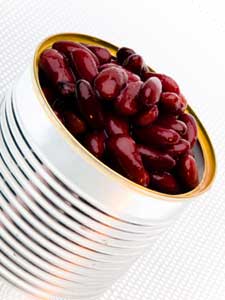 By Melissa Breyer for Care2.com
By Melissa Breyer for Care2.com
I, for one, love the idea that there are superfoods–certain edibles that go the extra mile in terms of nutritional chutzpah. They may not leap tall buildings, but superfoods are purported to fight the evil villains of heart disease, high cholesterol, cancer and a host of other diseases. Blueberries, for example, have become a superfood darling for their powerful punch of antoxidants–and I have to say, they do seem pretty mighty to me.
That said, I think some of the trendy superfoods are stealing the spotlight from the true heart of the matter–from the everyday heroes. It seems to me that almost any grain or produce that is grown organically, unprocessed and prepared gently has much to offer. Aside from just a listing of antioxidant values, I can’t see a list of ten superfoods that earn obvious rank. In fact, if you look at 10 “Top 10 Superfoods” lists, you will see that they vary widely.
The truth is, most good food from nature is pretty super. So with that in mind, I like taking a seasonal approach. Rather than debating the merits of acai berries over goji berries, I prefer to look at what’s in season, and work with the nutritional workhorses that I can get here and now. These are my favorites for fall, based primarily on nutritional variety and strength, but that also give me that primal, sensuous satisfaction that comes with eating what’s in season:
 Sweet Potatoes and Pumpkin
Sweet Potatoes and Pumpkin
I am head over heels for these flavors come fall, and no wonder: The dark orange vegetable family outdoes all others in vitamin A content. Sweet potatoes are also packed with antioxidants, vitamin C, calcium, and potassium. Other dark orange vegetable standouts include pumpkin, carrots, and butternut squash.
Cruciferous Vegetables
Crucifers such as broccoli, cabbage, kale, cauliflower, Brussels sprouts, collards and turnips contain indole alkaloids that may help prevent cancer. They are also high in fiber, antioxidants, vitamins and minerals. Along with their fabulous flavor, once you get the hang of cooking them, they may have an added bonus: they may help bolster memory as you age. Researchers at Harvard Medical School found that women who eat the most of these foods are the least likely to be forgetful.
Pomegranates
Pomegranates have very high antioxidant activity, offering brain and memory protection. Research shows that drinking pomegranate juice may help with lowering the risk for hardening of the arteries or atherosclerosis.
Beets
The pigment that gives beets their super-beautiful fuschia depth-betacyanin-is also a powerful cancer-fighting agent. Beets’ potential effectiveness against colon cancer, in particular, has been demonstrated in several studies. Beets are also particularly rich in the B vitamin folate.
The Alliums
Garlic, onions, leeks, scallions, chives and shallots contain sulfur compounds that may protect against heart disease and some cancers, they can all help the liver eliminate toxins and carcinogens.
 Beans
Beans
An excellent source of protein, antioxidants, folic acid, potassium, dietary fiber and complex carbohydrates, beans are flavorful, nutritionally dense, inexpensive and versatile.
Olive oil
Several large studies suggest that the monosaturated fat in olive oil is good for the heart. Olive oil lowers bad cholesterol levels and increases good cholesterol. It is high in antioxidants–and is one of the superstars of the Mediterranean diet. Recent research shows that heart-attack survivors on a Mediterranean diet had half the death rates of those on an ordinary low-fat diet.
Tea
The caffeine content in tea is useful for stimulating alertness, mood and motivation, but is also a rich source of the antioxidant called catechins. Studies suggest that catechins protect the artery walls against the damage that causes heart disease and prevents formation of blood clots. It also does wonders for the spirit on a cool autumn day. See 9 Reasons to Drink Green Tea Daily.
Red Wine or Grape Juice
Grapes provide vitamin C, vitamin B1 and vitamin B6–red grapes also contain powerful phytochemicals (especially phenolics) that may help decrease risk of cardiovascular disease. These phenolic compounds are housed mostly in the skin of the red grapes, which is what makes red wine red and dark grape juice red or purple. Resveratrol, a polyphenolic stilbene found in the skins of red fruits including grapes, may be responsible for some of the health benefits ascribed to the consumption of red wine. Resveratrol has been shown to have anti-oxidant, anticancer, and anti-inflammatory activity.
